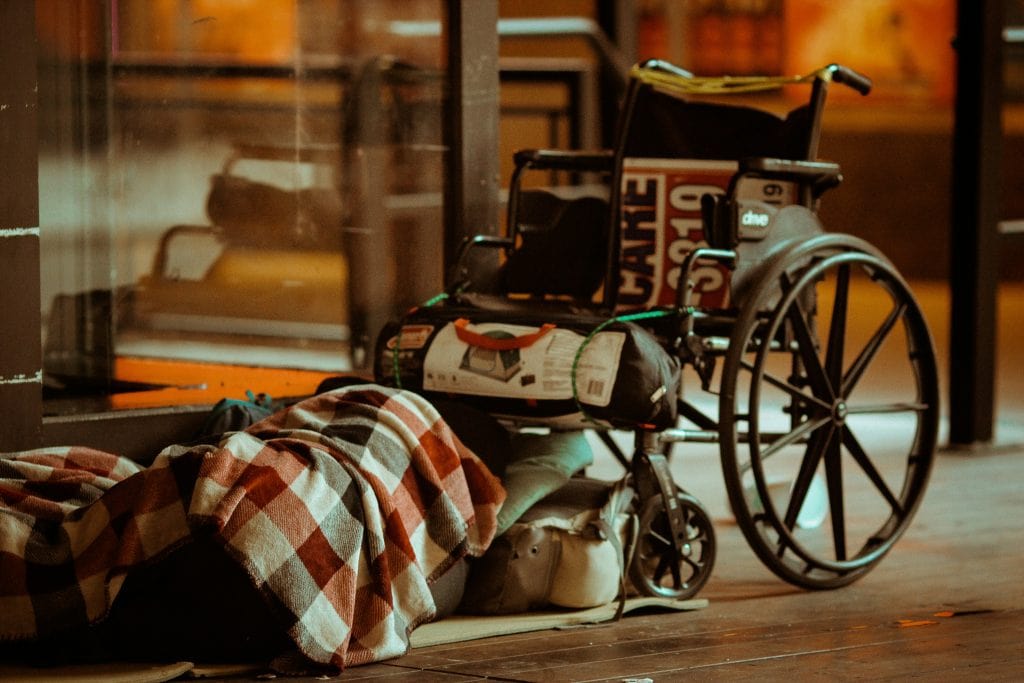
Postpartum Depression and the Collapse of Care
After the birth of my second child, postpartum depression took its toll on me. The coronavirus pandemic caused one of my workers to leave without notice. Personal support workers were in short supply. They didn’t apply to you—you applied to them.
The highest bidder won.
Trapped in an Inaccessible Basement
We were living in a basement, and outside was not accessible. I spent most of my days in what one of my friends called a “lifeless hovel.”
“Your life is looking pretty bleak,” she said.
Motherhood, Disability, and Isolation
I was writing a book at the time, but my second-born was far more demanding than my first. She wanted no one but me, and I would sit on the couch for up to eight hours just holding her—her little bright blue eyes staring up at me. Any sense of accomplishment or purpose was left forgotten on the back burner.
Considering Medical Assistance in Dying
The lack of control, the isolation, the unpredictability of the support I was receiving… I seriously considered Medical Assistance in Dying.
The conversation took place over the phone, obviously—no in-person appointments for the people most likely to die of a highly contagious virus while they’re suffocating to death. I sat alone on my nursing chair, awkwardly holding the phone to my ear.
The Price of Staying Alive
“I can’t do this,” I told my neurologist. “I had no idea it would be this hard. I had no idea there wouldn’t be more support.”
ODSP gave me an extra $50 a month for my second daughter.
“What would solve your problem?”
“Money.”
“Money,” he repeated. “What specifically could be improved by money?”
“More accessible housing, more consistent care, more hours to have autonomy and freedom.”
“Yes, that makes sense. We did a study and we found that it would take $250,000 a year to give someone like you a quality of life. And that’s without kids.”
The Real Crisis: Stress, Not Illness
“I don’t want to be here. I can live with ALS. It is shitty. It is painful. It is miserable. I can do that. But I cannot live with the stress.”
“Brittany, you killing yourself because of stress with two children would be unbelievably tragic.”
“How long?” I asked him, sobbing violently.
“They will never reverse it.”
“How long until they stop it?”
“Ten years.”
He Didn’t Want to Die Either
Amir Farsoud is a disabled Canadian man who applied for medical assistance in dying—not because he wanted to die, but because he couldn’t afford to live.
In May of 2022, his story made headlines.
I remember feeling his fear in my own body.
Not metaphorically. Physically. Viscerally.
Because I understood it. I still do.
It’s now been nearly three years—
And Canada has done almost nothing to change the conditions that led to this.
Here’s the reality:
- The Canada Disability Benefit, expected to launch in 2025, will provide just $200/month—subject to provincial clawbacks and not enough to lift anyone out of poverty.
- The average cost of a one-bedroom apartment in Ontario is $1,700/month.
- Most disability assistance programs (ODSP, PWD, etc.) leave people $800–$1,200 below the poverty line.
- As of 2023, 1 in 5 Canadians with disabilities lives in chronic poverty.
- In 2021, Canada reported 10,064 MAiD deaths—a 32% increase from the year before.
- Over 35,000 people have died through MAiD since it became legal in 2016.
And now they’re expanding eligibility even further.
To people like me. Like Amir. Like thousands of others who don’t want to die—but are being starved of options.
Amir Didn’t Want to Die—He Just Couldn’t Afford to Live
He asked for:
- A ramp.
- A place to live.
- Support.
They gave him paperwork for a lethal injection.
This is not compassion. It is convenience.
It is society saying:
“We will not fund your survival. But we will fund your death.”
Others Who Faced the Same Choice
The systemic failures that led me and Amir Farsoud to consider MAiD are not isolated incidents. Several other Canadians have faced similar circumstances:
- Roger Foley: A man suffering from cerebellar ataxia who has publicly shared that he was offered assisted death multiple times while hospitalized, instead of being provided with adequate support to live with dignity.
- Christine Gauthier: A Canadian Paralympian and veteran who testified that a Veterans Affairs Canada employee offered her MAiD when she was advocating for a wheelchair lift in her home.
- Denise: A 31-year-old woman from Toronto, known by the pseudonym Denise, who applied for MAiD after struggling to find safe, affordable housing that wouldn’t exacerbate her multiple chemical sensitivities. Her application was paused following public support that provided temporary housing solutions.
These stories are just the ones that have reached public attention. There are undoubtedly many unnamed individuals who have faced similar despair, their struggles and decisions remaining largely unreported. The expansion of MAiD without addressing the underlying issues of poverty, inadequate housing, and lack of support services continues to put vulnerable populations at risk.
We’re Not Asking to Be Special. We’re Asking to Survive.
Amir didn’t want to die.
Neither do I.
But every day, this country makes it harder to live.
If this enrages you—it should.
Share this. Follow me. Say something.
I write because I want to live. I scream because I have to.
Support My Work
If this story moved you, please consider:
- Donating to my GoFundMe to support my fight for accessible housing and survival
- Exploring the full blog archive for more stories on disability, policy, and truth-telling
Your support means everything.
